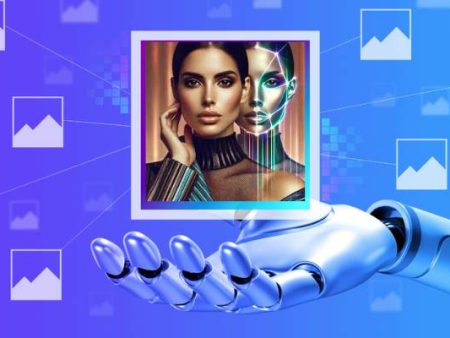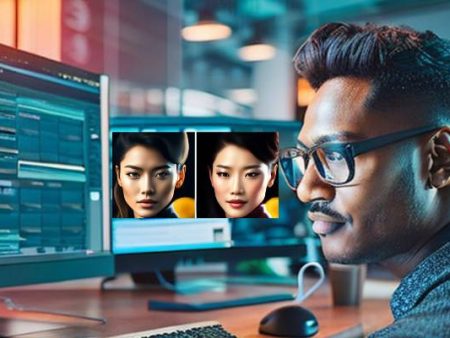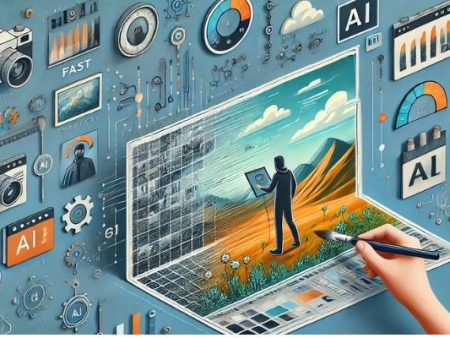Photography has always had this beautiful contradiction—at once honest and deceptive. A portrait freezes a real moment, but it’s often retouched to make skin glow, colors pop, or imperfections fade.
For decades, human photo editors have been the invisible hands behind that process. They didn’t always get the spotlight, but they shaped how we see ourselves, celebrities, and even history.
Now, AI is barging into that quiet editing room. With tools that can swap skies, smooth wrinkles, and erase distractions in seconds, people are starting to whisper (sometimes loudly): is this the end of human photo editors?
That question isn’t just technical—it’s emotional, cultural, and personal. And the truth, as usual, isn’t simple. Let’s dive into it.
The Landscape: What AI Retouching Actually Does
AI-powered retouching goes way beyond blemish removal. Platforms like Adobe Photoshop’s Generative Fill, Luminar AI, and even smartphone apps now allow users to:
- Instantly change lighting conditions.
- Apply entire moods with a single filter.
- Reconstruct damaged or incomplete photos.
- Smooth skin, reshape bodies, whiten teeth—all with one click.
What once took hours of meticulous brushwork can now be done in moments. And this is where the guide to how AI is making headlines comes into play.
AI isn’t just a faster clone stamp—it’s learning from millions of examples to make intelligent guesses about what an image “should” look like.
The result? Sometimes breathtaking, sometimes uncanny.
The Human Touch: What Gets Lost in Automation
Here’s where my personal opinion comes in. Having worked with editors who obsess over the tiniest details, I can tell you: photo editing has never just been about fixing flaws. It’s about storytelling.
A human editor asks: What story should this image tell? Should the portrait highlight vulnerability, or power? Should the colors evoke nostalgia, or urgency?
AI doesn’t ask those questions. It just predicts what “looks good” based on training data. And sometimes, that means it flattens the individuality out of an image.
This is where the impact of AI: time-saving or creativity-killing becomes painfully relevant. Yes, AI saves time.
But if every image starts looking like an algorithm’s idea of perfection, does the creativity get lost in translation?
AI Insights on Filters vs Traditional Editing
Let’s talk about filters. They’ve always been controversial. Back in the early days of Instagram, purists scoffed at sepia tones and heavy vignettes. Now, AI filters can do things traditional editing never could.
This leads us into the AI insights on filters vs traditional editing: conversation.
- Traditional editing required knowledge of curves, levels, layers, and painstaking adjustments. It was slower, but it taught editors to see images deeply.
- AI filters can replicate entire editing styles instantly. Want your portrait to look like a Rembrandt painting or a Vogue cover? Done in seconds.
But here’s the catch: traditional editing leaves room for nuance and subjectivity. AI filters often homogenize.
If thousands of photographers apply the same “AI cinematic” look, individuality starts to fade.
So the question isn’t whether AI filters are better—it’s whether they’re flattening creative diversity.
Efficiency: The Double-Edged Sword
We can’t ignore the benefits. For working professionals, time is money. If AI can cut editing time in half, that’s not trivial—it’s the difference between delivering projects on deadline or burning out.
Wedding photographers, for example, sometimes edit hundreds of images per job. AI can handle skin smoothing and exposure adjustments across an entire set, giving editors more time to focus on storytelling or artistic flourishes.
But here’s the emotional catch: many editors find meaning in that labor. There’s pride in manually perfecting an image, just as there’s pride in a carpenter sanding wood by hand. When AI shortcuts that process, some feel their craft is being hollowed out.
A Look at the Numbers
Numbers help put this into perspective:
- Adobe reports that over 90% of creative professionals now use some form of AI-assisted tool in Photoshop or Lightroom.
- A Zenfolio survey in 2023 found that 71% of professional photographers admitted to using AI-based editing tools.
- The global AI image editing market is projected to grow at 25% CAGR, reaching billions in value by 2030 (MarketsandMarkets).
In short, adoption isn’t just likely—it’s already happening. The question isn’t if AI will redefine photo editing, but how.
Guide to Can AI Truly Understand?
This brings us to the deepest question: guide to can AI truly understand the soul of an image?
Humans edit with empathy. A retoucher working on a family portrait understands that a wrinkle isn’t just a flaw—it’s a sign of life.
They might leave it in, or soften it gently, depending on context. AI, unless told otherwise, often erases it automatically.
That’s the subtlety that machines don’t get. Editing isn’t always about perfection—it’s about meaning. And meaning comes from human interpretation, not algorithms.
The Emotional Dimension
Think about a photo you love. Maybe it’s a candid shot of your parents, or a messy family holiday picture.
Would you want an AI to “perfect” it? Or do you love it precisely because of its imperfections?
This is where AI struggles most. It’s designed to optimize, to idealize. But human beings often cherish the flaws.
A child’s crooked smile, a blurred background, a wrinkle that shows decades of laughter—those are the things that make photographs matter.
When AI “fixes” them, it risks sterilizing memory itself.
Ethical and Professional Concerns
We also need to confront the ethical side:
- Misinformation: AI retouching makes it easier to create deceptive images. Think political campaigns, celebrity scandals, or even deepfake journalism.
- Job displacement: Entry-level retouching jobs are often the first rung on the ladder for aspiring editors. If AI takes those, where will new talent learn the ropes?
- Bias: AI models trained on limited datasets may reinforce narrow beauty standards, erasing diversity in favor of “idealized” appearances.
These aren’t hypotheticals—they’re real risks.
Where Human Editors Still Shine
Despite all the hype, there are areas where humans remain irreplaceable:
- Artistic vision: AI can mimic, but it can’t invent new cultural aesthetics.
- Ethical judgment: Knowing when not to retouch is as important as knowing how.
- Personal connection: Clients often trust human editors to interpret their intentions. An AI can’t sit down and have that conversation.
AI is powerful, but it’s not a substitute for taste, judgment, and emotional intelligence.
Looking Ahead: A Future of Collaboration
So, will AI replace human photo editors? Here’s my honest take: it won’t eliminate them, but it will force a redefinition.
- Human editors may shift into supervisory roles, directing AI outputs rather than manually retouching every detail.
- Entry-level positions may shrink, but new roles will emerge—AI workflow managers, authenticity auditors, creative directors specialized in human-AI collaboration.
- The value of “handcrafted” editing may even rise, much like handmade furniture retains appeal in a world of mass production.
In other words, goodbye to human editors entirely? I don’t think so. But goodbye to the old role of editing as repetitive labor? Absolutely.
Conclusion: Goodbye, or Just a New Beginning?
The phrase “AI-powered retouching: goodbye to human photo editors” feels dramatic, but maybe it’s the wrong way to frame it. It’s not about saying goodbye—it’s about saying hello to a new kind of partnership.
AI will handle the repetitive, time-consuming parts. Humans will bring story, empathy, and vision. The two will co-exist, and the industry will evolve.
The real danger isn’t AI itself—it’s whether we let it flatten creativity into sameness. If we use AI wisely, it can amplify human artistry. If we don’t, it risks hollowing it out.
For me, photography has always been about connection. And connection, at least for now, still belongs to humans.


